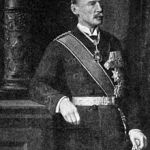

I discovered a connection between the twenty Indian soldiers killed in the recent border dispute with China and a distant relative of mine.
The link was Sir Henry McMahon ((1862-1949) who helped negotiate the McMahon Line between India and Tibet/China in 1914. India and China are still fighting over the boundary as last week’s events show.
Sir Henry was the great-grandson of Arthur McMahon, a McMahon of Oriel, in mid-Ulster, to which our MacMahons belong. Unusual for a MacMahon, he became a Presbyterian minister. The family had settled in Downpatrick but moved to Kilrea in Co Derry when Arthur was assigned to the church there.
The red-headed Arthur was called ‘a most daring and pugnacious man’ and became a member of the National Directorate of the United Irishmen. He was a colonel in Ulster during the 1798 uprising and fought in a number of battles in Ulster. Afterwards he had to flee to France. There he joined Napoleon’s Irish legion and died fighting, probably at Waterloo, in 1815.
His son, Captain Alexander McMahon, was born in Kilrea in 1791 and became an officer in the East India Company.
His son (Sir Henry’s father), Lt-General Charles Alexander McMahon (1830-1904), was a notable officer in the East India Company and became a distinguished geologist. As could be expected, Henry ended up in India too. As Foreign Secretary of British India he signed the 1914 Simla Convention which fixed the McMahon Line along the crest of the Himalayas as the boundary between India and Tibet and, now, China.
I now know where the McMahon Line is and that not all MacMahons stayed at home in Monaghan and neighbouring counties. I note that Arthur’s family spelt their name with a ‘Mc’. There are no Henrys, Alexanders or Charles’ in our branch of the family, though there was a Columban McMahon from Monaghan named Arthur (no relation).
Photo: Sir Henry.
